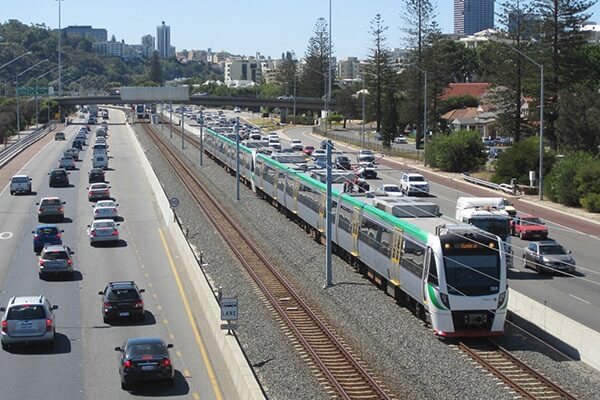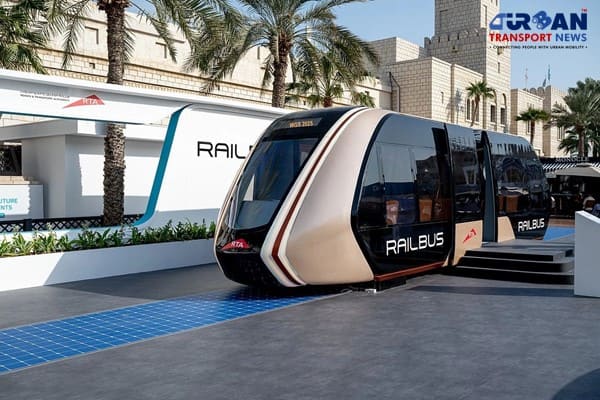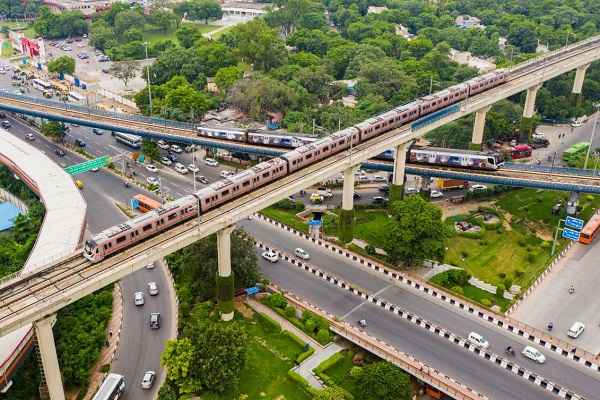 Delhi unveils ambitious Urban Mobility Vision: Luxury Metro Coaches, New Tunnels and Pod Taxi
Delhi unveils ambitious Urban Mobility Vision: Luxury Metro Coaches, New Tunnels and Pod Taxi Qatar approves Saudi Rail Link Agreement, Accelerating Gulf Railway Vision 2030
Qatar approves Saudi Rail Link Agreement, Accelerating Gulf Railway Vision 2030 UP Govt plans to introduce Water Metro services in Ayodhya, Varanasi & Prayagraj
UP Govt plans to introduce Water Metro services in Ayodhya, Varanasi & Prayagraj India’s First Urban Ropeway begins Trial Run in Varanasi, Set to carry 1 Lakh passengers daily
India’s First Urban Ropeway begins Trial Run in Varanasi, Set to carry 1 Lakh passengers daily India and Bhutan to Build First-Ever Rail Link: ₹4,033 Cr Project to Boost Regional Connectivity
India and Bhutan to Build First-Ever Rail Link: ₹4,033 Cr Project to Boost Regional Connectivity Patna to launch Eco-Friendly Water Metro; Trial Run soon between Digha and Kangan Ghats
Patna to launch Eco-Friendly Water Metro; Trial Run soon between Digha and Kangan Ghats Air India Group set to launch Flights Operations from Navi Mumbai International Airport
Air India Group set to launch Flights Operations from Navi Mumbai International Airport Chennai to launch 25-Year Mobility Plan with Unified QR Ticketing and One-App Transit System
Chennai to launch 25-Year Mobility Plan with Unified QR Ticketing and One-App Transit System Kochi Metro bags ₹4.4 crore contract to prepare DPR for Mumbai Water Metro Proejct
Kochi Metro bags ₹4.4 crore contract to prepare DPR for Mumbai Water Metro Proejct Navi Mumbai International Airport set for September launch; IndiGo and Akasa Air to lead Operations
Navi Mumbai International Airport set for September launch; IndiGo and Akasa Air to lead Operations
The importance of transport as an enabler of development

The past two years since the previous Asia-Pacific Transport Forum have seen an unprecedented change in how the globe understands transport and mobility. While the pandemic recovery is well underway, the impact is still being felt and continues to shape the transport sector. As we are moving forward, this should be seen as an opportunity for better and more sustainable transport in the post-pandemic time, and an opportunity to re-imagine the future of Transport.
While the pandemic impacts must be acknowledged, they need to be seen as part of a wider vision and part of a long-term strategy for transport. A strategy that aligns with the international agreements such as the Sustainable Development Goals and the Paris Agreement, and the need to decarbonize the transport sector. I strongly believe that these issues are not mutually exclusive. Continuing to address the pandemic impacts while delivering on the wider long-term vision is possible and should be pursued.
Transport should provide access for all and do so in the most inclusive manner. Giving access is fundamental to development, whether it is access to education, health, or economic opportunities, and all this helps lift people out of poverty. Transport is a means to an end and while it may not have a standalone sustainable development goal like some of the other sectors, transport makes a meaningful contribution to eight of the SDGs.
When it comes to access, data shows that 630 million people have inadequate rural access and 1,4 billion people, or 61% of the urban population lack good access to public transport. These numbers relate to the SDGs 9.1 and 11.2.
While providing access, transport must be sustainable. Transport is clearly broader than just getting people and goods from point A to point B. We define sustainable transport as accessible, affordable, environmentally friendly, economically and financially sound, as well as safe. Safety includes road crashes, road fatalities and injuries but as well as people's perception and use, particularly important for the gender dimension of inclusivity.
Now, let us acknowledge that transport activities are growing in the region and will continue to grow. In the meantime, data shows that compared to the global average transport in Asia is characterized by a large infrastructure deficit, a low level of access, high cost of transportation, low but fast-growing vehicle ownership, and high levels of emissions.
There are some noteworthy aspects of transport in Asia. Asia and the Pacific account for 97% of total e-vehicles worldwide, primarily because of the dominance of two-wheelers and three-wheelers. This is an area where the region leads the world in the decarbonization of the transport sector. Those are facts are supported by the Asian Transport Outlook database.
Let me mention that the Asian Transport Outlook database is developed and kept updated by the Asian Development Bank and its partners. It is used to inform a greater understanding of the sector and review and monitor how the region performs against a series of transport indicators at both the country and city level. The ATO will be widely used to inform the discussions in the Forum sessions. The database is open source and accessible on the ADB one-line library.
The infrastructure deficit in Asia and the Pacific requires additional funding of about 2.4% of GDP. It is obvious that bridging the infrastructure funding gap requires a collective effort by governments, development partners, and the private sector. Looking at it as a half-full glass, rather than half empty, this deficit can be seen as an opportunity. We are still in the early stages of development and any good decision to influence the future of transport can have a positive impact at scale.
Transport must address its negative externalities such as congestion, emissions and road crashes. And we see very promising initiatives around transport decarbonization and improved road safety being developed in the region. The alignment of transport projects with the Paris Agreement has become a central question and strong commitments have been made by Governments and all development partners. Road safety is also a growing public health concern globally and requires increased attention, aligned with the UN's second Decade of Action on road safety. Let us keep in mind more than 2,000 people lose their lives to road crashes in the region every day and many more sustain serious life-changing injuries. This social and economic loss must stop.







